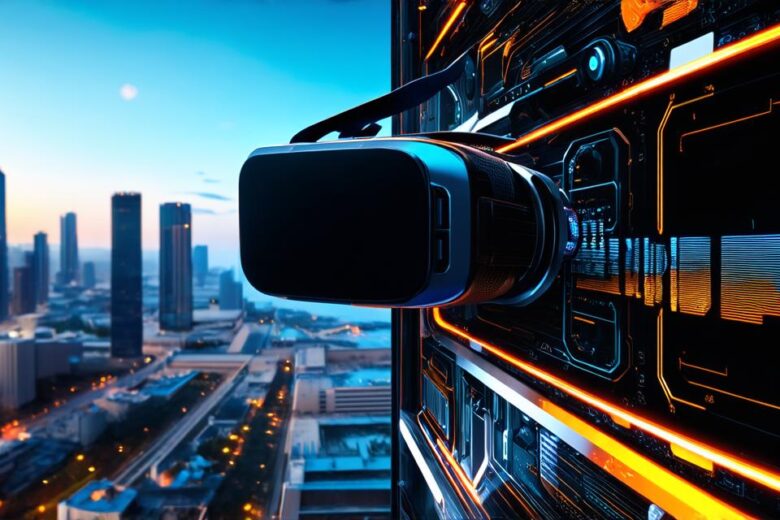
What is Augmented Reality (AR)?
Augmented reality is a technology that superimposes digital elements onto the real world, creating an interactive and immersive experience for the user. AR uses sensors, cameras, and algorithms to track the user’s environment and overlay digital content on top of it. This can be anything from simple graphics to complex 3D models, and it allows users to interact with that content in a variety of ways.
One of the most well-known examples of AR is Pokemon Go, the popular mobile game that uses the player’s GPS to superimpose virtual creatures onto real-world environments. Other applications of AR include shopping and interior design, where customers can see how furniture or clothing would look in their home before making a purchase.
What is Virtual Reality (VR)?
Virtual reality, on the other hand, is a fully immersive experience that completely replaces the real world with a digital one. VR uses headsets, sensors, and controllers to create a 360-degree view of a virtual environment that the user can interact with. This can include everything from simple games to complex simulations, and it allows users to fully immerse themselves in a new world.
One of the most well-known examples of VR is Oculus Rift, the popular gaming console that allows users to enter a fully immersive virtual world. Other applications of VR include training and simulation, where users can practice skills in a safe and controlled environment, and therapy, where VR can be used to treat conditions such as PTSD or anxiety disorders.
Differences between AR and VR
While both AR and VR are exciting new technologies, they have some key differences that set them apart. One of the main differences is the level of immersion. While AR allows users to interact with digital content in their real-world environment, VR completely replaces the real world with a virtual one. This means that VR can be more effective at creating a fully immersive experience, but it may also be less practical for everyday use.
Another difference is the cost of development and implementation. AR can be implemented using existing hardware such as smartphones and tablets, which makes it more accessible to developers and users alike. VR, on the other hand, requires specialized hardware such as headsets and sensors, which can be expensive to develop and implement.
Real-life examples of AR and VR in action
Despite their differences, both AR and VR are already being used in a variety of real-life applications. For example, IKEA has been using AR technology to allow customers to see how furniture would look in their home before making a purchase. This has greatly increased customer satisfaction and reduced the number of returns.
In healthcare, VR is being used to treat conditions such as PTSD and anxiety disorders. By creating a virtual environment that simulates real-world triggers, therapists can help patients learn coping mechanisms in a safe and controlled environment.
In the gaming industry, both AR and VR are being used to create new and immersive experiences for players. For example, Pokemon Go has become one of the most popular mobile games of all time, with millions of users around the world interacting with the game on a daily basis.
FAQs about AR and VR
Q: What is the difference between augmented reality and virtual reality?
A: Augmented reality superimposes digital elements onto the real world, while virtual reality completely replaces the real world with a digital one.
Q: Can AR and VR be used in healthcare?
A: Yes, both AR and VR are being used to treat conditions such as PTSD and anxiety disorders by creating a virtual environment that simulates real-world triggers.
Q: How can AR and VR be used in the gaming industry?
A: Both AR and VR are being used to create new and immersive experiences for players, such as Pokemon Go for AR and gaming consoles like Oculus Rift for VR.
